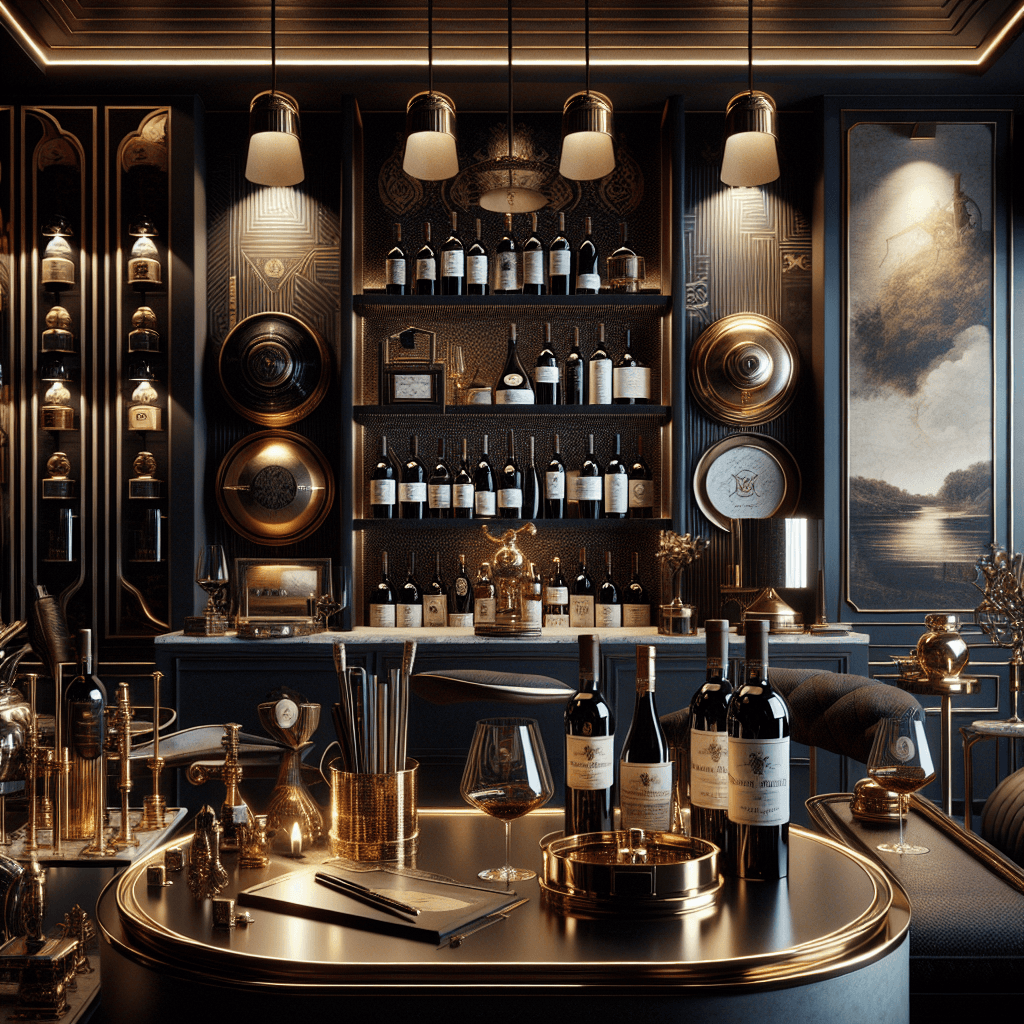How Pauillac’s Unique Geography Shapes the Wine’s Finesse
Château Lafite Rothschild, a name synonymous with luxury and refinement, owes much of its elegance to the unique Pauillac terroir. This prestigious wine estate, celebrated for its exceptional Bordeaux wines, stands as a testament to how geography and natural conditions can sculpt a wine’s character, influencing everything from aroma to complexity.
- Understanding Terroir: The Foundation of Wine Elegance
- Pauillac’s Geography: A Natural Blessing for Vineyards
- Viticulture at Château Lafite Rothschild: An Art Form
- Characteristics of Lafite Rothschild Wines: A Symphony of Flavors
- Cultural Impact: Lafite Rothschild in the World of Luxury
- Concluding Reflections on Terroir and Elegance
Understanding Terroir: The Foundation of Wine Elegance
The concept of terroir is pivotal in the world of winemaking. It refers to the natural environment in which a particular wine is produced, including factors such as soil, topography, and climate. These elements come together to impart unique qualities to the wine, making each terroir distinct.
At Château Lafite Rothschild, the terroir is characterized by deep gravel soils, a favorable microclimate, and a topography that optimally positions the vineyards for sun exposure and drainage. This combination not only enhances the growth and ripening of grapes but also contributes to the complexity and flavor profile of the wine.
- Soil Composition: The gravelly soil provides excellent drainage, reducing the risk of grapevine roots standing in water and stressing the vines, encouraging them to produce high-quality grapes.
- Microclimate: The Gironde estuary moderates the climate, ensuring mild temperatures and adequate moisture – ideal conditions for growing the Cabernet Sauvignon and Merlot grapes that dominate the estate’s vineyards.
- Sun Exposure: The gentle slopes of Pauillac ensure optimal sun exposure, crucial for the synthesis of phenolic compounds responsible for the color, tannins, and flavors of the wine.
Pauillac’s Geography: A Natural Blessing for Vineyards
Pauillac, a commune located in the Médoc region, is bordered by the Atlantic Ocean to the west and the Gironde estuary to the east. This geographical positioning plays a crucial role in the area’s suitability for viticulture.
The estuary acts as a temperature regulator, protecting the vineyards from extreme weather conditions. The Atlantic influence brings in a breeze that helps keep the vines healthy, reducing humidity-related diseases and promoting a longer growing season. This extended period allows grapes to develop fuller flavors and balanced acidity, which are hallmarks of Lafite Rothschild’s wines.
The topography of Pauillac also contributes to the distinctiveness of its terroir. The slight elevations ensure that frost, which can be devastating to budding vines, drains away effectively. Moreover, the gravel-rich soil, a result of thousands of years of riverine deposits, reflects sunlight and retains heat, fostering an environment where grapes can thrive.
Viticulture at Château Lafite Rothschild: An Art Form
Viticulture at Château Lafite Rothschild is steeped in tradition yet embraces innovation. The estate’s approach to grape growing is meticulous, with a profound respect for the land and its history.
Each vineyard plot is treated individually, considering its specific terroir characteristics. The estate employs sustainable farming practices, understanding that the health of the vineyards is integral to the quality of the wine. This includes organic practices that avoid chemical treatments, enhancing the natural resilience of the vines.
The harvesting of grapes at Lafite Rothschild is done by hand, a testament to the estate’s commitment to quality. Selective picking ensures that only the best grapes make it to the winery, a crucial factor in the production of premium wines.
Characteristics of Lafite Rothschild Wines: A Symphony of Flavors
The wines of Château Lafite Rothschild are renowned for their complexity, elegance, and aging potential. The interaction between the Pauillac terroir and the varietals grown results in wines that are not only structured and balanced but also rich with flavors of dark berries, hints of cedar and spices, and an underlying minerality.
The texture of Lafite Rothschild wines is particularly noteworthy. The fine-grained tannins, a direct result of the gravelly soil, provide a silky mouthfeel that enhances the tasting experience. The aging process, in carefully selected oak barrels, adds another layer of complexity, imparting subtle notes of vanilla and toast.
Cultural Impact: Lafite Rothschild in the World of Luxury
Château Lafite Rothschild is not just a winery; it is a cultural icon in the luxury sector. Its wines are considered collectibles, often found in the cellars of connoisseurs and auctioned at premium prices. The brand’s reputation for quality and exclusivity adds to its allure, making it a symbol of status and fine taste.
The influence of Lafite Rothschild extends beyond the wine industry. It is a benchmark for excellence in craftsmanship and heritage, qualities that resonate with those who appreciate the finer things in life. The estate’s commitment to sustainability and its impact on the luxury market also reflects a broader trend towards ethical consumption in the world of high-end goods.
Concluding Reflections on Terroir and Elegance
The elegance of Château Lafite Rothschild’s wines is a direct reflection of its terroir. The unique geographical and climatic conditions of Pauillac have created a setting where vines produce grapes of exceptional quality. This, coupled with the estate’s dedication to viticulture and winemaking, ensures that each bottle of Lafite Rothschild offers a remarkable experience of luxury and taste.
Understanding the role of terroir not only enriches one’s appreciation of wine but also highlights the importance of preserving these natural environments. As we savor a glass of Lafite Rothschild, we are reminded of the delicate interplay between nature and human craftsmanship, a relationship that yields extraordinary results in the world of fine wine.
For further exploration of Château Lafite Rothschild and its storied history, consider visiting authoritative sources such as the estate’s official website or the Château Lafite Rothschild Museum.



